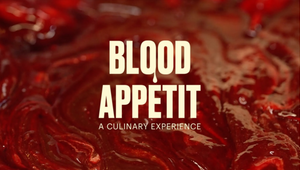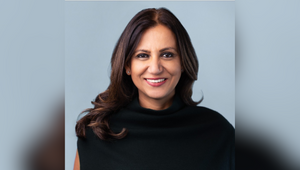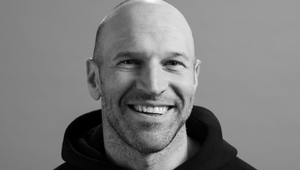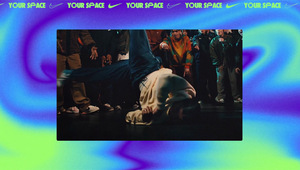
The Name Game: How R/GA Is Bringing AI to Brand Naming

The idea that artificial intelligence will become a useful tool for creatives, supplementing and boosting their capacity and bringing fresh, unbiased ideas is one that has been bouncing around the more forward-facing parts of the industry for a while. But that theory is becoming more of a reality. We’ve already seen a lot of development when it comes to generating digital images, whether as design ideas or to supplement aspects of CG animation and VFX. But now, machine learning is entering into that most human and fundamental of creative exercises. The naming of things. To pinch a line from T.S. Eliot, it’s a difficult matter.
R/GA has been using AI to help boost its branding practice. They’ve developed tools that help generate less predictable and more surprising options, circumventing the biases that are worn like record grooves into our brains. But this isn’t a case of replacing creatives with computers, rather it’s about offering up new pathways for exploration.
Robert Northam, ECD at R/GA London explains how this process is working and shares some insight into a recent project that involved devising a new brand name that would work for both English and Arabic speakers.
LBB> Tell us a little bit about what R/GA London is using machine learning for and how? How has it been used for branding and naming projects for clients for example?
Robert> In short, R/GA London has been combining the power of AI and Machine Learning (ML) with human creativity and curation. We’ve been using the power of AI and ML to supercharge our naming process—we combined human writers with curated inputs to train our machine learning platform. For naming and branding projects, this enables us to generate large volumes of new names in a short amount of time. For example, resulting in over 100K generated names, the most recent outcome is an AI coined and human curated brand name for a new financial platform.
LBB> What is the main value of using Machine Learning (ML) in this scenario? How does it benefit the client?
Robert> Machine learning doesn’t have any human bias so the outcomes help to push the work into unexplored or unexpected areas. Sometimes with hilarious results but always to places new.
Machine learning accelerates the naming process and generates large volumes of names, at pace. This allows our writers to concept and curate while working on brand projects.
Outputs can be controlled to exclude existing brand names and terms, so another added benefit is around trademark screening. This increases the chance of a brand name making it through the screening process and ensures getting to more original names, earlier in the process.
LBB> Can you share some examples of branding and naming projects that were achieved using machine learning - what do you think machine learning will bring to the projects that couldn’t have been there if the projects had been done ‘the old fashioned way’?
Robert> The most recent project is for a financial services company we’re working on, which unfortunately we can’t name at this point—however we hope to be able to share more info on that soon. But essentially during this project we coined the brand name for a new financial platform and SME bank in the Middle east.
Machine learning is an important part of the naming process and was used as a way to augment and get to unexpected places faster. Our writers and creatives concepted brand names from English meanings, Arabic meanings and supercharged these approaches with ML. The end result happened to come from our machine learning platform but it’s the naming process and human talent that landed us on the name.
LBB> What was the team who worked on this?
Robert> The entire brand team works on naming and helps curate the names. English and Arabic writers lead the name generation, guided by strategy and creative. Our creative technologists work with curated inputs and we adjust the input weighting to get to the right outputs. In terms of specific call outs and names of those who have been leading this recently, it ranges from our SVP MD Rebecca Bezzina, myself, our former head of copy Russell Norris, our creative technologist Max Wilke and our producer Rosie Lee (who’s had the tough job to go through the thousands of names and scale it back to a shorter list!).
LBB> What’s the human element to this and is this intended as a replacement for human writers or creatives?
Robert> The human element is the most important aspect when working on brand and creative projects. ML is not a replacement for humans but a way to augment writers and creatives, so from the very beginning our goal was to empower humans with technology. It allows us to get to unexpected places and generate names in volume and at speed. Human creativity and curation are essential at all phases of a project when using ML. Essentially, we are looking at ways to take human and cultural bias out of our naming process.
LBB> What sort of reaction do you get from clients when you bring these tools up - and what sort of education do you find you have to do with them?
Robert> The reactions from clients have been positive. Once they understand how ML increases the speed and volume of names generated they really see the value.
For clients that work in the technology space, there is a sense of pride that their brand name has been created through a collaboration of humans and ML. We are creating an interesting brand story from day one that helps to differentiate from the competition.
For senior clients and board members the fact that we looked at over a 100K names to land on a concise shortlist shows the depth of thinking and inspires confidence. We have looked at the maximum potential names and demonstrated value for their investment.
LBB> In terms of the process, how do you figure out what sort of inputs and data sets you might use to generate ideas for a particular project?
Robert> There is definitely no-one-size-fits-all answer to this. It really comes down to each project and its context, and the goal you are trying to achieve. Sometimes it is open source data, sometimes it’s custom data created by us, sometimes a combination. And finding the right data requires a good intuition about how these systems work and a lot of experimentation.
But the data used to train a Neural Network is what defines the quality of the outcome. We look at combining data from brand names in the sector, naming themes and even our own brand strategy to get started. Adjusting and iterating the weighting of the inputs creates different outputs. We are also able to control the types of names, length of names and what letters we want to omit. A good example of this is we omitted the letters P and V at the start of our names as they are harder to pronounce in Arabic. This is the human curation and creativity that is needed to get to a good result.
The ML tools we use are publicly available. It’s a mix of human curation to get the inputs into the right format, using Google Drive for storing the inputs and outputs. Google TensorFlow is the ML framework we use to control the name generation and Google Colab is where we use cloud computing to generate the outputs.
For this project we spent two days curating the inputs to be used. The time taken to then generate 100K names was 30 minutes. The potential is vast when you consider how long the traditional brand naming phase is.
LBB> Internally, what has the journey been like for creatives as they get their heads around these tools? I’d guess that people who join R/GA are naturally pretty open minded and embrace innovation but I can also see that creatives might feel threatened (even if it’s a more emotional or subconscious reaction). So what has the internal adoption journey been like?
Robert> R/GA has a lot of smart people. If something hasn’t been done before everyone gets excited by that and wants to be involved. Our creatives and writers immediately saw the potential of ML as a way to push further and faster. Everyone has been receptive to using ML in their process as the value is clear.
At a subconscious level my initial reaction was how can a human brain compete with a machine that can generate 100K names in 30 minutes? It can’t. But a machine doesn’t know what good is or why something works. That's why the human element is crucial. An analogy is when design software became cheap and available to everyone. Just because you can use Photoshop doesn't mean the design will be any good. Human creativity and curation are needed and ML is another tool we can use.
LBB> How will you continue to evolve this?
Robert> We are looking at making our machine learning platform available to wider teams across the R/GA network so that we can supercharge our writers. We’re also looking into ways to collate inputs and themes so that we can have more control of the outputs across different brand sectors when naming. By creating a library of inputs to combine we can get more targeted outputs.
The end goal for this could be a white label tool with a simple interface that would allow designers, writers and strategists to generate names in volume. More than names with machine learning the possibilities are endless. We’re also experimenting with generating images for clients such as Vollebak.
LBB> What is one of the biggest lessons you have gained from working this way?
Robert> Machine learning is not a silver bullet or a replacement for humans. It’s an exciting tool that allows our writers and creatives to get to unexpected places faster. Human curation and validation is still the deciding factor in creating stellar work.
The biggest lesson is that you get out what you put in. So GIGO, garbage in = garbage out. The quality of the inputs and the constraints applied during the name generation process will determine the quality of naming outputs.
How much is too much? Getting to a manageable quantity of outputs is another learning for us. There is a tipping point where the quantity of data generated becomes too much and the search for quality takes too much time. The constraints applied to inputs help to focus the quality of the outputs.
That and a lot of patience to go through thousands of names.















